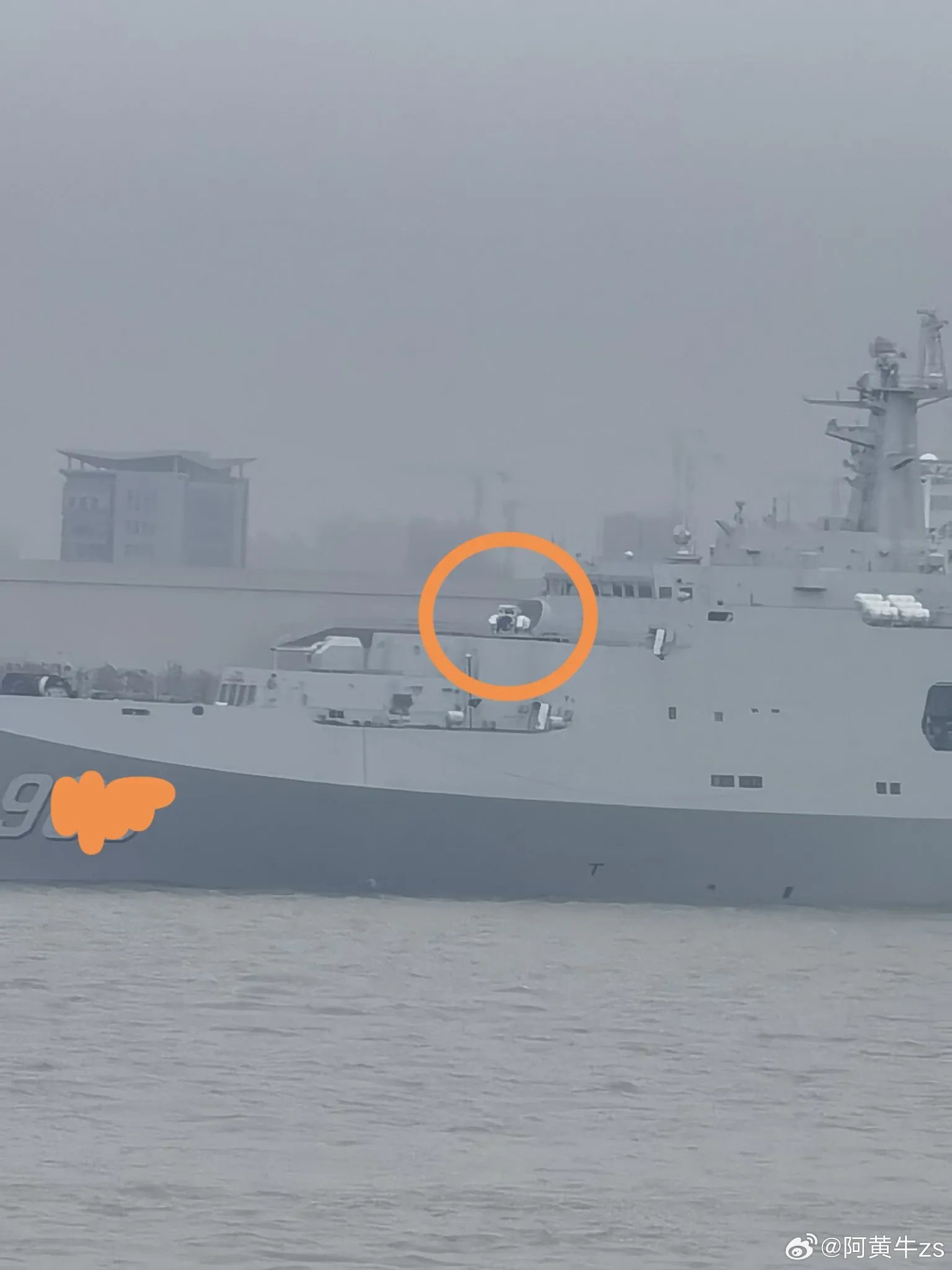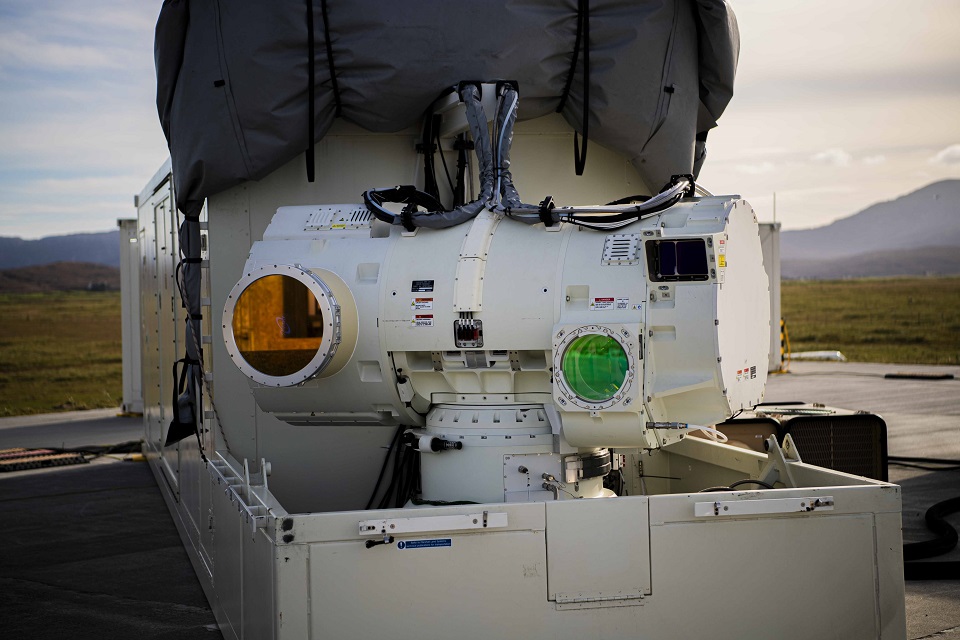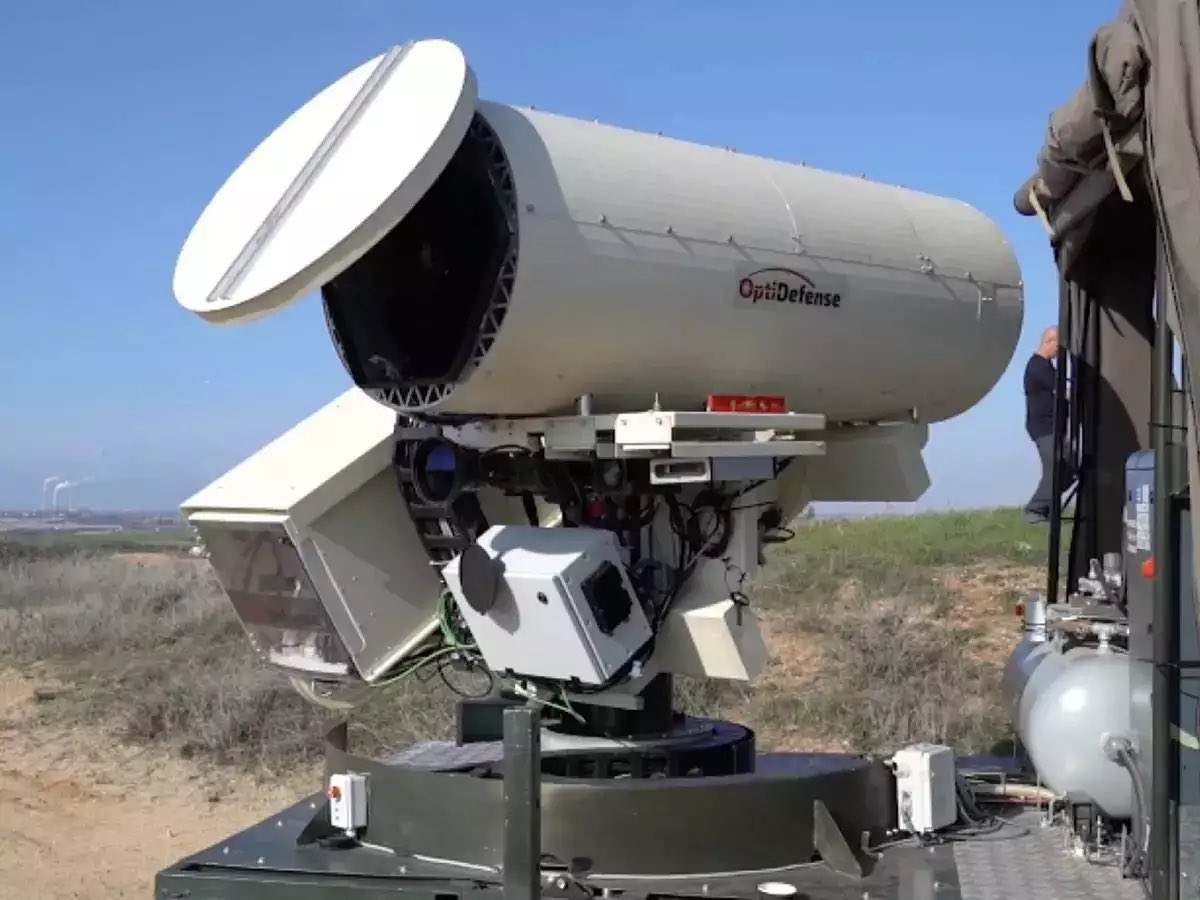China’s Victory Day Parade was an enthralling display of several cutting-edge weapon systems developed by the country as part of an extensive military modernization drive. Among them was the LY-1, touted as the world’s most powerful laser-based air defense system.
The event was hosted by China for the first time to mark the 80th anniversary of the victory in the Chinese People’s War of Resistance Against Japanese Aggression.
China officially debuted the LY-1, a massive ship-borne laser air defense system, at the V-Day Parade on September 3. The system was part of a ship-borne air defense formation that also included HHQ-9C, the HQ-16C, a close-range air defense system.
A high-power directed-energy weapon (DEW) developed by China, the LY-1 is primarily designed for use aboard the People’s Liberation Army Navy (PLAN) warships and, perhaps, its aircraft carriers. However, as seen in the parade, the LY-1 features a turret-mounted design, which means that it could be adapted for ground use.
China has so far released no information about the power of this laser air defense system.
While the details about this system remain shrouded in secrecy, it appears to have a large central circular aperture that serves as the beam director for emitting the laser.
It also has multiple smaller circular apertures around it, likely meant for electro-optical and infrared sensors used in target acquisition, tracking, and aiming.
Additionally, it features a box-like structure on one side of the turret, possibly housing additional sensors such as radar or passive radio-frequency detectors.
In naval configurations, it may include a retractable protective dome to shield the system when not in use, similar to prototypes tested on US Navy ships.
Military affairs expert Zhang Xuefeng told the state-owned publication Global Times that on ships, the LY-1 has sufficient space for power units, meaning that it could have higher power, allowing it to intercept not only unmanned systems but also anti-ship missiles, with very low cost for each interception.
“As a type of laser weapon, the LY-1 can also effectively avoid the problem of time lag between the target lock-on of shipborne fire control radar and the actual firing of traditional air defense weapons. It also effectively avoids the problem of a large dispersion ratio of traditional shipborne close-in guns,” Zhang said. The LY-1 can accomplish “aiming equals locking on, firing equals hitting,” with very high interception accuracy, he emphasized.
The LY-1 shipborne laser weapon that made its first public appearance in V-day parade on September 3, can effectively damage the optical sensors of enemy weapons and equipment, and their emergence will truly change the rules of maritime warfare. On ships, the LY-1 has sufficient… pic.twitter.com/SaeS90wfbV
— Global Times (@globaltimesnews) September 3, 2025
This design would likely allow rugged deployment in combat environments, including at sea. It also suggests mobility, potentially enabling engagements while on the move in land-based setups. The overall size indicates a high-power output, distinguishing it from lower-power dazzling lasers that China has extensively deployed.
Several PLA analysts noted that the debut of the system at the parade meant that it had already entered service or is about to be inducted soon.

China has been working on developing laser-based air defense systems for several years and has made significant strides in the quest. For instance, it has developed the Silent Hunter, a 30–100 kW electrically powered, fiber-optic laser weapon designed to neutralize low-flying drones, and the laser-based Shen Nung counter-drone system. China’s laser ADs have allegedly been spotted in Iran and Russia.
More importantly, though, a laser weapon was spotted on China’s Type 071 Amphibious Assault Ship in August 2024. At the time, a dedicated PLA watcher told EurAsian Times that it seemed that the weapon was in the late stages of testing out on the ship. Many observers believe that the LY-1 has eerie similarities with that weapon.

The EurAsian Times understands that the LY-1 will further bolster China’s anti-access/area denial (A2/AD) capabilities, particularly in contested regions like the South China Sea or Taiwan Strait, which will make a conflict with Beijing more expensive for the United States.
Additionally, the use of a laser air defense (that costs a fraction of the cost of a surface-to-air missile) will reduce the cost of downing hostile targets, especially since US Generals are working on the ‘Hellscape Strategy’ that involves the mass deployment of inexpensive, autonomous unmanned systems that will be used to attack the PLA in a conflict.
The proliferation of low-cost drones, as seen in conflicts like Ukraine, has exposed vulnerabilities in traditional air defenses. Laser systems provide a sustainable countermeasure with their low per-shot cost and unlimited “magazine.”
Chinese experts believe that the development of shipborne laser weapons will fundamentally alter the rules of maritime warfare since they can successfully target the optical sensors of adversary weapons and equipment.
Laser Weapons For The Win
Laser weapons are now occupying a substantial space in defense plans across the globe by providing an economical and effective substitute for missile interceptors.
As previously explained by EurAsian Times in a detailed article, Lasers are particularly useful against unmanned aerial vehicles (UAVs) because their concentrated laser beams can rapidly heat a drone’s body. This can result in the drone’s structural failure, leading to the burning off of one of the wings on a fixed-wing drone.
Laser weapons typically enhance naval defense against anti-ship missiles, small boats, and unmanned aerial vehicles at sea. Using these weapons significantly lowers the number of casualties because, unlike kinetic weapons, there is no momentum transfer, shock wave, or high-velocity fragments. Moreover, the high-energy laser beams’ instantaneous time of flight prevents the target from making the first strike.
The US Navy’s High Energy Laser with Integrated Optical-Dazzler and Surveillance (HELIOS) system, integrated into destroyers, is a prime example of this.
HELIOS is a 60+ kW-class laser. Developed by Lockheed Martin, it is a large, stationary energy-producing apparatus with a directed energy array mounted on top.
The system produces a lot of energy to excite photons, which are then focused on a particular target – likely a drone or a missile. This causes a concentrated area of that target to heat up until it combusts.

In February this year, the USS Preble, which is the first warship to be equipped with this system, successfully test-fired its high-energy laser weapon system against a drone. Some observers said that the Chinese LY-1 is likely very similar to the laser weapon programs pursued by the US, such as the HELIOS.
With Directed Energy Weapons (DEWs) taking centre stage, the United Kingdom has also developed a laser weapon named DragonFire laser-directed energy weapon (LDEW) for installation aboard its warships.
It is a 50-kilowatt (kW) class laser directed-energy weapon (LDEW) designed to counter drones, missiles, and mortar rounds with high precision and low cost per shot. The system includes an electro-optical camera and a secondary lower-power laser for target acquisition and tracking, mounted on a turret for precise aiming.
The DragonFire weapon is accurate enough to strike a £1 coin from a distance of one kilometer, and the cost of operating the laser is typically less than £10 per shot.

Israel, on the other hand, has developed the Iron Beam, which is a 100–150 kW solid-state fiber laser system, capable of focusing a beam to the diameter of a coin at 10 kilometres.
It integrates with Iron Dome, using Artificial Intelligence (AI) to decide whether a laser or missile interceptor is best suited for a threat. It is designed to complement Israel’s multi-layered missile defense network by providing a cost-effective solution to intercept threats like rockets, drones, and anti-tank missiles.
Each interception costs a little over $3, compared to $40,000–$150,000 per Iron Dome Tamir missile. Moreover, it offers a near-infinite magazine as long as power is available. Earlier this year, manufacturer Rafael announced the first-ever combat use of a high-power laser system during a military drill.

Russia has also developed multiple laser weapons that remain classified so far. This includes Peresvet and Zadira.
Peresvet is a ground-based laser weapon system named after Alexander Peresvet, a medieval Russian warrior monk. It is designed for air defense and anti-satellite (ASAT) warfare, primarily to dazzle or blind optical-electronic reconnaissance satellites and protect mobile intercontinental ballistic missile (ICBM) launchers.
On the other hand, Zadira is an advanced laser weapon system designed for thermal destruction of targets, particularly drones, rather than just dazzling. Its power is believed to be in the 50–100 kW range.
Asian military powers such as the Republic of Korea and India have also developed their own laser weapons. South Korea’s “Star Wars Project” aims to transform defense capabilities with laser weapons designed to neutralize drones and missiles.
The laser weapon, named Block-I, can precisely strike small drones and multicopters at close range, and each shot would cost approximately 2,000 won or just US$1.50.
Meanwhile, India successfully tested its first high-energy laser weapon, the Mk-II(A) Laser-Directed Energy Weapon (DEW), on April 13, 2025. The 30-kilowatt laser system demonstrated the ability to neutralize fixed-wing, swarm, and surveillance sensors precisely at ranges up to 5 kilometers.
The weapon can engage targets at the speed of light, using a laser beam to cause structural failure or destroy warheads, offering a cost-effective alternative to traditional ammunition with minimal collateral damage.
European countries like France also remain invested in developing laser weapons. It has developed the HELMA-P (High Energy Laser for Multiple Applications – Power), a 2–10 kW laser system designed to neutralize drones and other aerial threats.
It features a two-axis turret with optical sensors and a laser emitter, controlled by a single operator via a human-machine interface. Additionally, the French Defence Procurement Agency (DGA) recently placed an order for a demonstrator for a laser weapon system, known as SYDERAL, intended for anti-drone warfare and short-range air defence.
- Contact the author at sakshi.tiwari9555 (at) gmail.com
- Follow EurAsian Times on Google News




